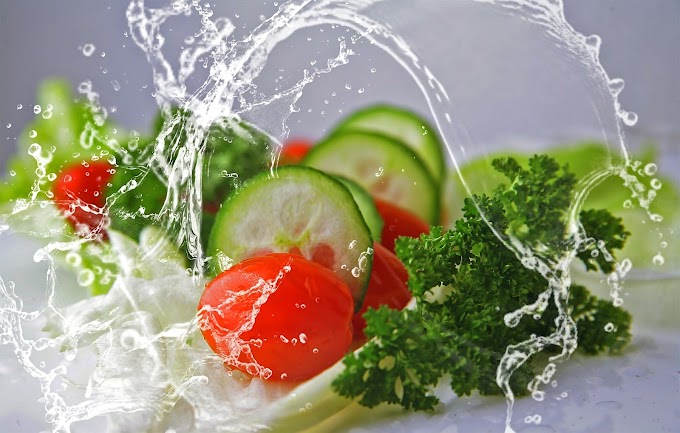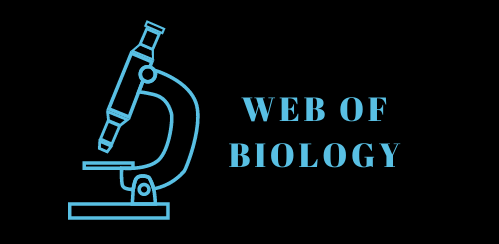 |
| Macronutrients and Micronutrients |
Macronutrients and Micronutrients
Macronutrients and Micronutrients: In this article, you will read about common Macronutrients and Micronutrients, their sources, and their functions. The nutrients which our body needs in larger amounts are called Macronutrients, which include, carbohydrates, proteins, and lipids. Energy or calories are provided to our body by these macronutrients. Micronutrients are those nutrients that are needed in trace amounts by our body. These constitute mainly Vitamins and minerals.
Macronutrients:
With a few noticeable exceptions, heterotrophs require organic molecules, such as carbohydrates, lipids, and proteins, in their diets. Enzymes break down these molecules into components that can be used for energy production or as sources for the "building blocks" of life.
Carbohydrates as macronutrients:
(Carbon and Energy from Sugars and Starch)
The major dietary source of energy for heterotrophs is complex carbohydrates. Most carbohydrates originally come from plant sources. Various polysaccharides, disaccharides, or any of a variety of simple sugars (monosaccharides) can meet this dietary need.
Carbohydrates are also major carbon sources for incorporation into important organic compounds. Many plants also supply cellulose, a polysaccharide that humans and other animals (with the exception of herbivores) cannot digest.
Cellulose is sometimes called dietary fiber. it assists in the passage of food through the alimentary canal of mammals. Cellulose may also reduce the risk of cancer of the colon because the amounts of mutagenic compounds that form during the storage of feces are less if fecal elimination is more frequent.
Sources of carbohydrates:
 |
| Sources of carbohydrates |
Carbohydrates are found in milk, bread, potatoes, nuts and legumes, cherry pie, spaghetti, corn, sauces, condiments, etc. Fruits like bananas, apples, berries, melons, mangoes, and oranges are also a source of carbohydrates.
Lipids:
(Highly Compact Energy-Storage Nutrients)
Neutral lipids (fats) or triglycerols are contained in fats and oils, meat and dairy products, nuts, and avocados.
Lipids are the most concentrated source of food energy. They produce about 9 calories (kcal) of usable energy per gram, more than twice the energy available from an equal mass of carbohydrates or protein.
Many heterotrophs have an absolute dietary requirement for lipids, sometimes for specific types. For example, many animals require unsaturated fatty acids (e.g. linoleic acid, linolenic acid, and arachidonic acid).
These fatty acids act as precursor molecules for the synthesis of sterols, the most common of which is cholesterol. the sterols are also required for the synthesis of steroid hormones and cholesterol, which is incorporated into cell membrane. other liquids insulate the body of some vertebrates and help maintain a constant temperature.
Sources of Lipids:
 |
| Sources of lipids |
Sunflower oil, safflower, canola, olive, corn, and soy are rich in lipids. Cocoa butter, animal meat, and dairy products are also a source of lipids.
Proteins:
( Basic to the Structure and Functions of cells)
 |
| Proteins |
Proteins are large and complex molecules that play a vital role in our body. Proteins are needed for their amino acids, which heterotrophs use to build their own body proteins. They are used for structure, regulation and function of various body tissues and organs. Proteins have great nutritional value and also play an active role in various metabolic reactions. Some proteins also act as enzymes crucial for our metabolic reactions. Proteins are one of the most abundant organic molecules in our body.
Sources of Proteins:
Animal sources of proteins include other animals and milk. Plant sources include beans, peas, and nuts.
Micronutrients:
Micronutrients are usually small ions, organic vitamins, inorganic minerals, and molecules that are used repeatedly in enzymatic reactions or as parts of certain proteins (e.g. copper in hemocyanin and iron n human hemoglobin). Even though they are needed in small amounts, animals can not synthesize them rapidly (if at all); thus they must be obtained from the diet. Micronutrients are needed for the healthy development of our body and the prevention of various diseases.
Minerals:
Our body needs minerals for development and proper functioning. Some minerals are needed in relatively large amounts and are called essential minerals, or macrominerals. For example, sodium and potassium are vital to the functioning of every nerve and muscle in an animal's body.
Animals lose large quantities of these minerals, especially sodium,, in the urine every day. Animals that sweat to help regulate body temperature lose sodium in their sweat. A daily supply of calcium is needed for muscular activity and, with phosphorous, for bone formation.
Other minerals are known as trace minerals, trace elements, or microminerals. animals need these in only very small amounts for various enzymatic functions. Iodine, calcium,
potassium, phosphorus, iron, sodium, copper, chloride, molybdenum, and
manganese are some important minerals needed by our body.
Sources of Minerals in food:
 |
| Sources of minerals |
Vegetables, cereals, fruits, bread, fish, milk, nuts, and dairy products are the main sources of minerals.
Vitamins:
Normal metabolic activity depends on very small amounts of more than a dozen organic substances called vitamins. Vitamin is the general term for a number of chemically unrelated, organic substances that occur in many foods in small amounts and are necessary for normal metabolic functioning. Vitamins may be water soluble or fat soluble. Most water-soluble vitamins, such as the B vitamins and vitamin C, are coenzymes needed in metabolism. Fat-soluble vitamins have various functions.
The dietary need for vitamin C and fat-soluble vitamins (A, D, E, and K) tends to be limited to vertebrates. Even in closely related groups, vitamin requirements vary. For example, among vertebrates, humans and guinea pigs require vitamin C, but rabbits do not. Some birds require Vitamin A; others do not.
Sources of vitamins:
Vitamins A is found in eggs, milk, fish oils, beef liver, red bell pepper, tomatoes, etc.
B vitamins are found in meat, eggs, seafood, legumes, seeds and cereals, yeast, etc.
Vitamin C is found in white potatoes, tomatoes, strawberries, bell peppers, cruciferous vegetables, etc.
Vitamin D is found in egg yolks, red meat, liver, and fish oils.
Vitamin E is found in Red bell pepper, peanuts, almonds, beet greens, pumpkins, etc.
Sources of vitamin K include green leafy vegetables, fortified meal replacement shakes, soybean and canola oil, etc.
 |
| Macronutrients and Micronutrients |
This is all about Macronutrients and Micronutrients. I hope you've taken a good bit of knowledge from this article. Share your reviews in the comments section below.







If you have any doubt, let me know.